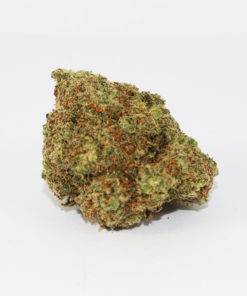Subtotal: $119.00
Guides
Flex Your Green Thumb: Tips On Growing Cannabis At Home
The Grow Room in Regina will be offering workshops to help home-growers

Budding green thumbs now have the opportunity to legally grow their own cannabis at home.
Canadians can grow up to four cannabis plants for personal use per residence under the new laws. The plants must come from licensed seeds or seedlings.
Chad Bonin has been growing medical marijuana for more than 20 years. He is the in-house master grower at Regina’s The Grow Room, a garden supply shop only for cannabis.
“Basically if you can grow a tomato plant, you can grow a cannabis plant easily,” said Mackenzie Bulych, community development and education coordinator at The Grow Room.
The Morning Edition’s Samanda Brace visited The Grow Room in Regina. It’s a business that won’t be selling cannabis at all, but plans to have a role in how consumers produce their own. 6:14
Bonin and Bulych will be offering classes on how to grow cannabis at The Grow Room.
“From that very first step all the way to the end you can make mistakes, but it’s really easy and just a little guidance and anyone can do it,” said Bonin.

Step 1: Set up your grow space
There are many options for growing cannabis, from hydroponics to soil.
‘Most people will use soil. It’s the easiest and most forgiving,” said Bonin.
You’ll also need to tailor your equipment to fit your space.
If you choose to grow indoors, which is easiest in Saskatchewan’s climate, you’ll need a place where there is little light pollution. Alternatively, you can purchase a grow tent or a grow closet in order to control light and other factors.
Classes and workshops will be offered to help home-growers cultivate cannabis. (Samanda Brace/CBC)
Depending on your method, you can spend anywhere from a couple hundred dollars to a few thousand.
Step 2: Choose a fertilizer and light
Bonin suggests soluble fertilizers for first-time growers, but organic is also an option.
The Grow Room offers a pot that’s filled with soil that has been composted for six months. All you have to do is place your seed or seedling into the cup and transfer the plant to a bigger pot once the roots grow.
A grow closet is one method you could use to grow cannabis at home. (Samanda Brace/CBC)
For lights, you have a choice between LEDs or HIDs (High Intensity Discharge).
“LEDS are the safest but are expensive,” said Bonin.
HID are more affordable and have specific bulbs for the vegetative growth and the flowering stage.
You’ll need to leave your chosen light on for 18 hours and keep it off for six hours.
Bonin says the temperature should range between 76 to 80 °F.
Step 3: Plant your seed
Once the environment is set up, you can begin to plant.
It will take about two to three weeks to vegetate the plant, and depending on the strain the flowering period will vary from six to 14 weeks.
There are several nutrients you can add to your cannabis plant to help it grow. (Samanda Brace/CBC )
Bonin says keeping a plant flowering for more than six weeks takes a lot of practice.
You can water it once a day and keep your light on a timer.
Step 4: Dry it out
Once you have your plant and it’s flowering, you need to determine when the flower is ready for harvest.
Bonin compares it to watching a fruit ripen.
“You see it every day and it kind of gets juicer and fatter. You’ll be able to tell,” said Bonin.
Once it’s ripe, you cut off the flower at the base and hang it upside down, letting it dry out.
Then you trim the leaves off and prepare to cure it.
Step 5: Cure it
The final stage involves curing the buds.
You take a glass jar or a stainless steel container and pack it loosely full of your flowers.
Seal the container. The moisture inside the flowers will hydrate the outside.
“Basically, you’re drying it out in stages. You are sweating it. Bringing the moisture from the inside to the outside and letting it breathe,” said Bonin.
You want to open the container several times per week to let the flowers “breathe” for a few minutes.
Your cannabis will be ready after curing for two to three weeks, but going even longer will improve the quality



 Twisted - Cara-Melts (Sativa)
Twisted - Cara-Melts (Sativa)  Donkey Butter (1 oz)
Donkey Butter (1 oz)  Twisted - Cara-Melts - CBD
Twisted - Cara-Melts - CBD 


